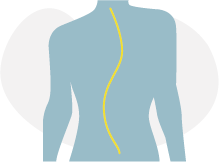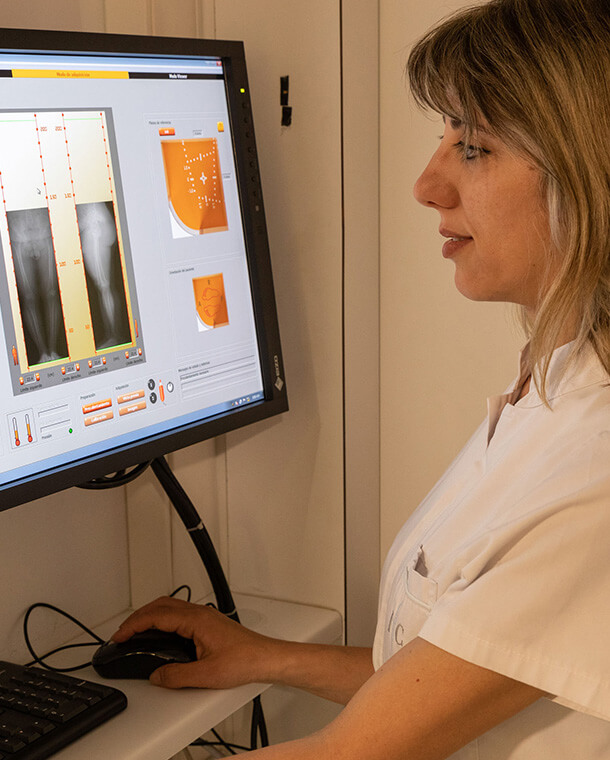Scoliosis surgery consists of correcting the affected segment by realigning and fusing the necessary vertebrae. This is done by precise placement of pedicle screws, which are then connected to metal rods of different alloys, to achieve the proper alignment of the spinal column.
Nowadays, with exhaustive planning, we can use much less invasive techniques to improve the results of the surgery.
1. WE BEGIN BY MAKING A THOROUGH SURGICAL PLAN
To do this, we are aided by the low dose bi-planar X-ray imaging equipment called EOS, which allows us to make a precise study of all the angles and shapes of the scoliosis, and in addition, the 3D reconstruction helps us simulate the result of the surgery.
2. INTRA-OPERATIVE GUIDED NAVIGATION
To ensure the correct placement of the screws, at the Instituto Clavel we use the real-time intra-operative imaging device O-Arm 2, which permits precise placement of the pedicle screws in curves rotated at different angles. Thanks to this, we are able to perform the complex maneuvers needed to align the spinal column without harming it, and the resulting correction is better.
In addition, we use the Mazor X robot technology to improve the planning of the surgery in order to optimize the location of the screw placement even more.
3. CUTTING TECHNOLOGY
In order to align the spinal column, the surgeon makes small incisions in the vertebrae. These cuts are called osteotomies. Thanks to modern technology, these small cuts are actually made by ultrasound, which means the cuts cause no bleeding.
4. BLOOD SALVAGING
We use intra-operative blood salvaging (IOS) making a reserve of the patient’s own blood during the surgery, reducing the need for donor transfusions post-surgery.
5. MONITORING
A neurophysiologist is present throughout the surgery, to safeguard the integrity of the spinal cord and other neural pathways through continuous intra-operative neurophysiological monitoring.
6. SURGERY BY STAGES
At the Instituto Clavel we also practice surgery by stages. That is to say, we may perform a minimally invasive abdominal or lateral approach surgery to help correct the scoliosis prior to performing the posterior approach surgery for placement of screws. We have found that dividing the surgery in separate stages over different days helps minimize the patient’s suffering and greatly facilitates postoperative recovery.
7. MULTIDISCIPLINARY MEDICAL TEAM
Scoliosis surgery requires a highly specialized, multidisciplinary medical team. At the Instituto Clavel, our team for treating scoliosis includes nurses, physiotherapists, traumatologists, neurosurgeons, and doctors specialized in pain management.


.jpg)
